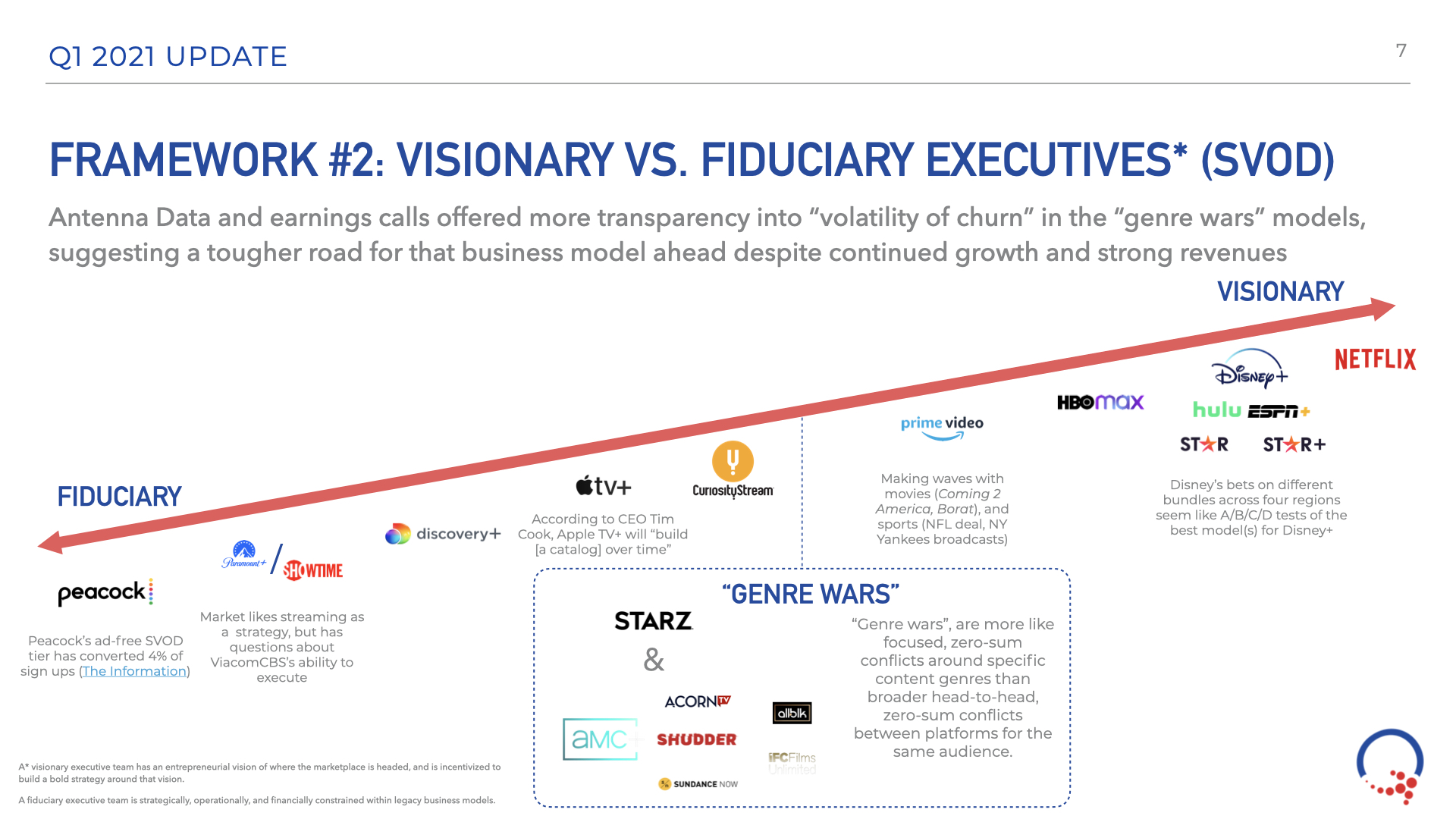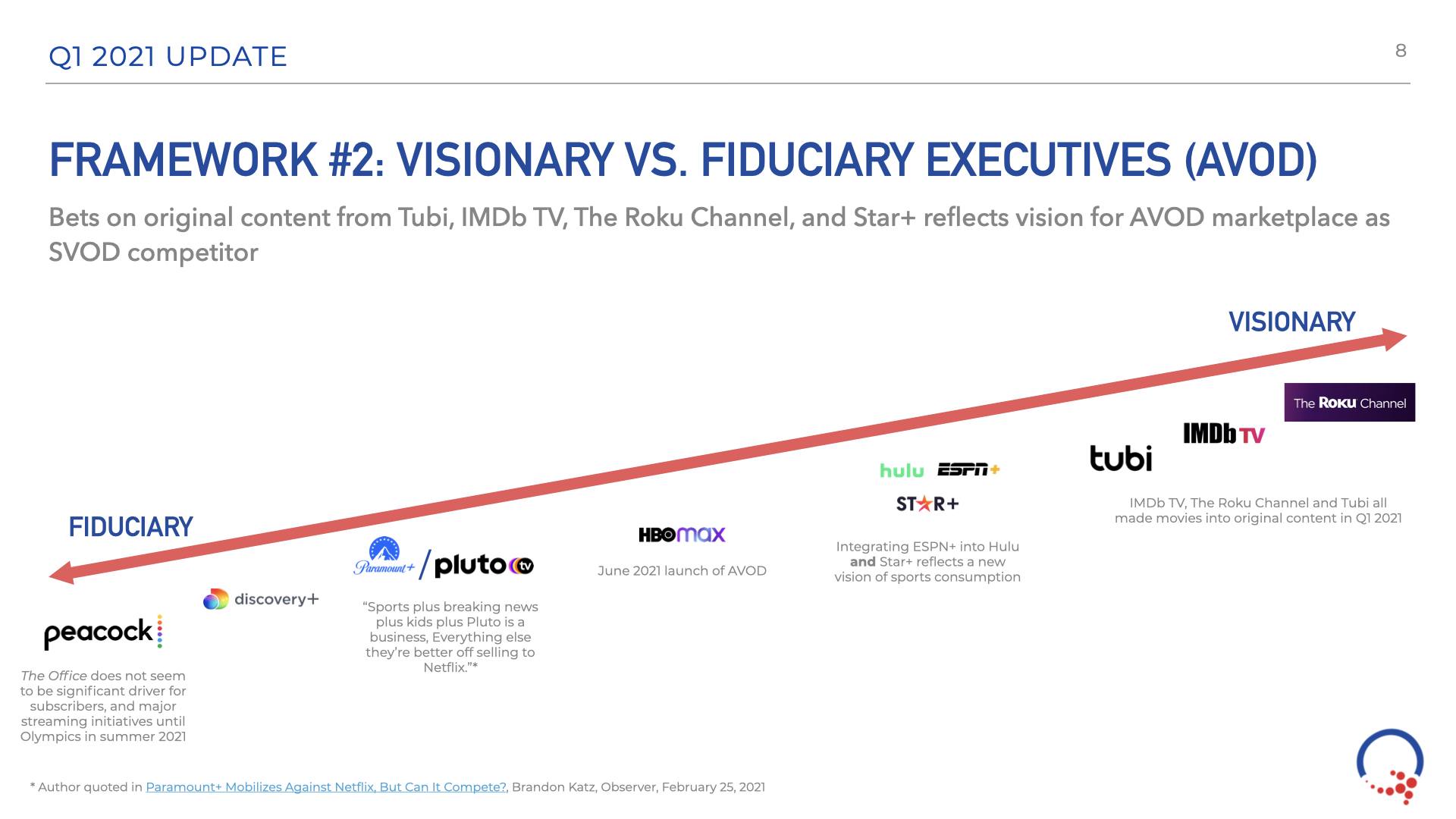Fiduciary vs Visionary Framework
What is Fiduciary vs Visionary framework?
The Fiduciary vs. Visionary framework highlights both the incentives and constraints around executive decisions. Visionaries are more agile decision-makers than Fiduciaries, who may be constrained by corporate strategy, operations, or finances.
Example
A visionary streaming executive is willing to take bigger risks in high-growth-potential countries like India or Brazil than a fiduciary executive might take. The executive instructs their team, “If we purchase this show and it bombs, what will we learn from that? If there is something big to learn, let’s go ahead and take the bet.” (Reed Hastings, Erin Meyer. No Rules Rules, 2020)
How does the Fiduciary vs Visionary framework work?
The framework focuses on what an executive is incentivized to do in their role.
- Is he or she incentivized to pursue his or her vision for the future of the business (Visionary)?
- Or is he or she constrained by the priorities of the Board of Directors and senior management (Fiduciary)?
The framework helps to identify constraints on executive decision-making in order to understand how they shape business outcomes.
Real World Example
Former NBCU CEO Steve Burke had the original vision for NBCU’s Peacock: News, Sports, and Entertainment. But now, new NBCU CEO Jeff Shell believes that “NBCU should try and build the pricier subscription tier of Peacock’s business”.
Does Burke’s vision constrain Shell’s ability to solve for Peacock’s problems? Or, is Shell a visionary executive himself with an international vision for Peacock?
Learn more in these two free pieces:
- PARQOR Monday AM Briefing #42, March 29, 2021
- Mic Drop #22: Investors Get Bearish, Quickly, on Paramount+ ($VIAC) & discovery+ ($DISCA), March 26, 2021



